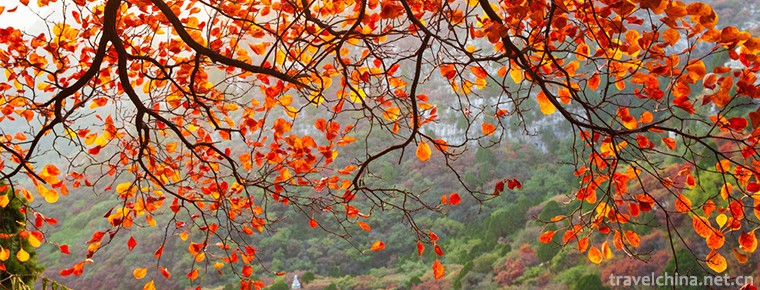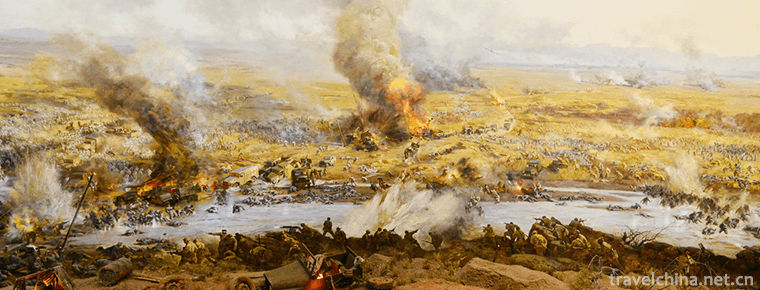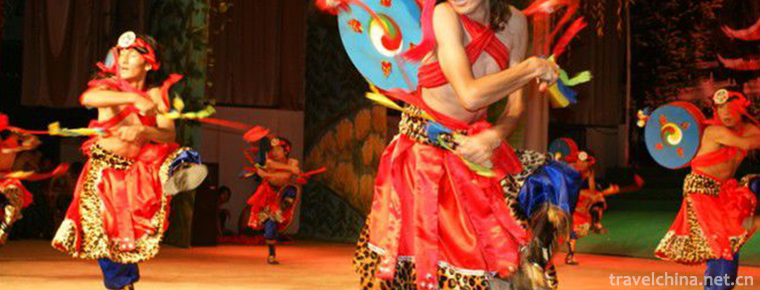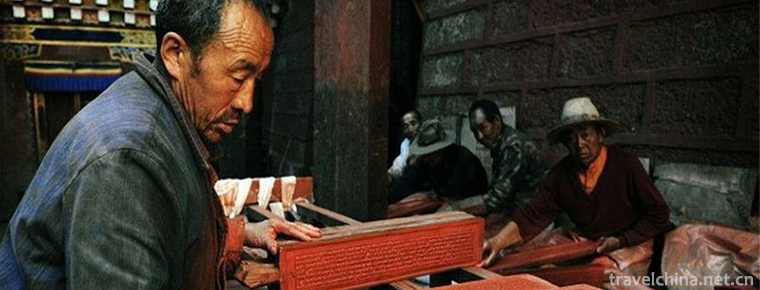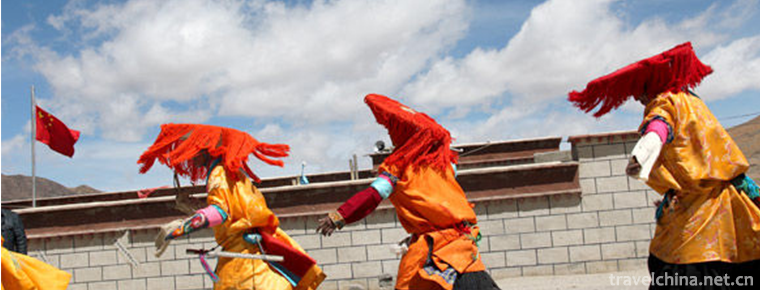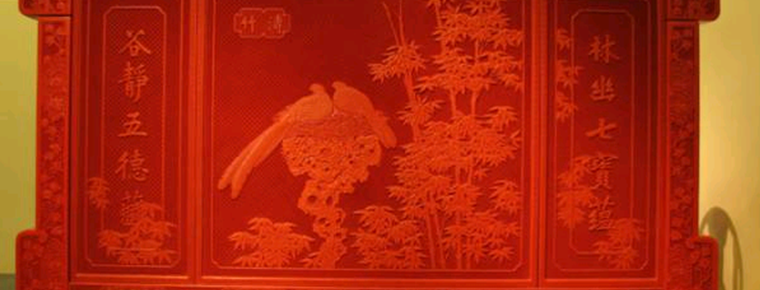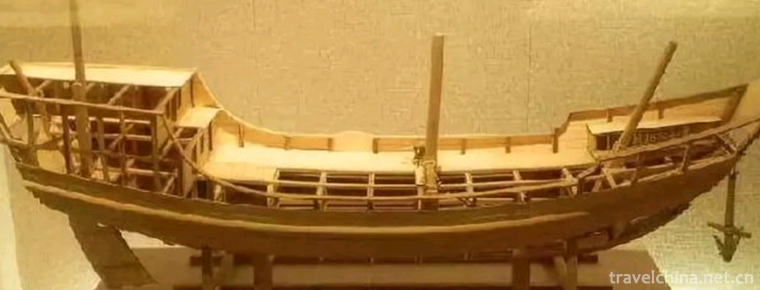Yao Nationality Medicine
Yao Nationality Medicine
Yao medicine is a traditional medicine summarized by the Yao people in their struggle against diseases. It has systematic medical theory and rich clinical experience. It has distinct national and local characteristics. It is one of the important components of traditional Chinese medicine and represents Yao herbal medicine.
Introduction to Medicine
Yao people live in mountainous areas of southern China, with a long history and rich culture. In the long-term practice of production and labor, the Yao people have accumulated rich experience in the use of herbal medicine for disease prevention and treatment, and formed a unique Yao medicine.
The methods and techniques used in the diagnosis and treatment of Yao nationality are various and have distinct national characteristics. They believe that besides wind, gas, worms, poison, diet and trauma, the five viscera and blood in the body are closely related to the occurrence and development of diseases, thus sums up a variety of diagnostic methods, such as looking, smelling, asking and touching, commonly used as nail examination, palm examination and tongue examination. Diagnosis, otology and facial examination, etc. According to the causes and symptoms of the disease, the symptoms and names of wind, locks, beans and scabies were summarized. In addition to herbal medicines for internal use, external washing, external application and fumigation, ironing and wearing, there are bleeding, pricking lamp moxibustion, moxibustion, bone moxibustion, matting moxibustion, medicinal moxibustion, stick moxibustion and cupping, needle picking, beating, tapping, scratching, rolling eggs, massage and finger scraping, bone arch scraping, bowl scraping, spoon scraping, garlic scraping, straw scraping, straw scraping, etc. Hemerocallis fulva et al. The types of diseases treated include internal, external, gynecological, pediatric, dermatological, facial and neurological disciplines, and many methods are effective.
The combination of medicine and Yao medicine is the characteristic of Yao medicine. Practitioners must understand medicine and those who know medicine must know medicine. Therefore, since ancient times, Yao doctors have been diagnosing their own diseases, collecting and processing their own medicines and dispensing prescriptions. Among the Yao people, there are only doctors'clinics, and there are no pharmacists or pharmacies specializing in prescribing drugs. Yao medicine can be classified as "five tigers", "nine cattle", "eighteen drills" and "seventy-two winds", which has important guiding significance for clinical medicine.
Yao medicine not only pays attention to the treatment of diseases, but also has a lot of research in preventive medicine. They have long recognized that some diseases can be transmitted to each other, that they can be prevented at the beginning, and have taken some effective measures. Such as "fear of acne, there are people infected, can not be re-entered", "epidemic disease, then burn their corpses in vain" and use banana leaves as bowls, catering for meals, etc.
Medical History
Because of the policies of ethnic oppression and discrimination carried out by the ruling classes in the past dynasties, the Yao ancestors were forced to enter the mountains for fear of not being high, forests for fear of not being dense, and migrated frequently, leading a hard life of recreation. They live in the old forests in the deep mountains, and live next to venomous snakes and beasts. Before 1949, the vast majority of Yao ethnic areas were in a closed and self-contained economic state, less influenced by other ethnic cultures, not to mention the introduction of traditional Chinese medicine or Western medicine. Bad geography, living environment and the invasion of disease, for the health of the nation. In their long-term struggle against harsh natural environment and diseases, they have accumulated rich experience in the use of herbal medicine to prevent and treat diseases by utilizing the abundant animal and plant medicine resources in Yaoshan Mountains, thus forming a unique Yao medicine. For example, the incidence of traumatic diseases such as high mountains and steep slopes everywhere, cliffs, snake bites, falls and injuries and fractures is higher. Yao doctors summarized a set of treatment methods with herbal medicine for external application, oral administration and external washing. The curative effect is remarkable and the course of treatment is short. Because they live in deep mountains and old forests, high altitude, cold and humid climate, rheumatism, arthralgia, scabies, scabies, etc. Hook, maggot, poison and so on are also frequently-occurring and endemic diseases. Yao medicine's treatment of these frequently-occurring and endemic diseases also summarizes a set of internal, oral, external washing, medicine bath, external application, cupping, cushion, fire attack, fir needle, pottery needle, needle pick. Scraping, pinching, egg moxibustion, moxibustion, oil lamp moxibustion and other comprehensive treatment methods.
There are no special books on Yao medicine, but sporadic records can be found in ancient books. These are very rough records. Although the Yao medicine with abundant connotations is a leak of ten thousand, we can still get a long history of Yao medicine from it.
Yao medicine is mainly composed of herbs and trees. It is the earliest recorded in the history that Yao people used herbs and trees to promote the book "The Book of the Later Han Dynasty, Nanman Biography". Shuyun: The ancestors of the Yao nationality "dyed wood bark with grass and good five-color clothes". Since they would use wood bark to dye clothes and grass to dye five-color clothes, would they bring "food", "application" and "washing"? It's worth investigating.
In the classics of Song Dynasty, there are more sporadic records of Yao medicine. Su Song's Tu Jing Materia Medica calls Sharen "only between Lingnan and Ze today". Yao ancestors took Amomum seed to relieve heat and digestion. As a treasure of the Yao family, Spiritual Vanilla is also found in many classics of the Song Dynasty. For example, Shen Kuo said in Mengxi Bi Tan that Lingxiang is called Linglingxiang by Tang people, and Lingzixiang is also called Lingzixiang. Zhou Qufei's "Ling Wai Dai Dai Answer" recorded the growth conditions, origin, soaking methods and marketing of Lingxiang. The book says: "Yao Dong and Jingjiang, Rongzhou (now Rongan and Damiaoshan), Xiangzhou (now Shilong), where deep mountains are shady and depressive, can also be planted." The herbs were "smoked and shaded with fireworks" and then transported to the mountains for sale. More than 700 years ago, the ancestors of Yao nationality had mastered the special processing method of Lingxiang, which is still practical today. This is remarkable. Because the fragrance of raw spiritual vanilla is not fragrant, it will not fragrant when it is exposed to the sun and dried. Only when it is smoked and dried in the shade with fireworks can the fragrance overflow and be used. Lingxiang can be used as medicine. It was once published in Li Shizhen's Compendium of Materia Medica. However, it was at least 150-200 years later than Yao people when Lingxiang was planted. Yao ancestors used Lingxiang herb as spices, insect repellent and mosquito repellent, but also used to treat cold, fever, abdominal pain, diarrhea, headache, low back pain and other diseases and contraception and sterilization. In the well-known "Qidong Yeyu", there is such a record: "In Fangchun, dozens of Yao women, singing and whistling in the valley, to find medicine to pick vegetables for the matter." It can be seen that the medication of Yao ancestors in Song Dynasty was quite common. Not only medical practitioners, but also ordinary civilian women can "seek medicine and choose vegetables for their own purposes". This fully illustrates the long history of Yao medicine.
The living and production conditions of Yao nationality are harsh, and they are injured by falls and fractures. The incidence of snake and insect bites is high. The ancestors of Yao nationality have already summed up a set of methods for treating diseases and injuries. Besides taking medicine orally and applying medicine externally, they have mastered some simple and effective surgical methods. For example, in Zhou Qufei's Ling Wai Dai Answer, it is recorded that Yao people "accidentally encounter drugs and arrows and cut their flesh with a knife, but they will not die". This is the most primitive and effective surgical method. A word "urgent" expresses the profound principles of medical science, and the ability to make and use arrows (usually for hunting) reflects the understanding of toxic drugs and other medicinal properties. From medical medicine to surgical operation, anesthetics may be necessary, which shows that Yao medicine not only existed objectively in history, but also developed to a certain extent in Song Dynasty.
More than 500 years ago, the original "tea eaters" lived in Jinxiu Yao Autonomous County of Guangxi. There are legends, stories and songs about them "planting tea, making tea and selling tea". It shows that the Yao people have a long history of drinking tea, and the cultivation and manufacture of tea are closely related to the cultivation of medicines and pharmaceuticals. The medicinal and health value of tea has been proved by modern scientific research. The formation and development of tea culture reflects the formation and development of Yao medicine in a way.
Bath medicine
Yao medicinal bathing herbs come from Dayao Mountain where Yao people live. They are usually collected for their own use. Fresh medicines are often used. They are usually washed and dried. Generally according to the performance of drugs, collocation, often no fixed formula, the weight of various herbs, depending on their habits, experience. There are hundreds of Yao bathing plants, which can be divided into the following categories, as follows:
1. Treatment of rheumatism and rheumatoid arthritis: with the effect of relaxing tendons and activating collaterals, dispelling wind and dampness, promoting blood circulation and relieving pain, eliminating fatigue and strengthening the body. Commonly used are Achyranthes bidentata, Bone-strengthening wind, Uncaria uncaria, Stretching tendon grass, Sunflower, Yaobaofeng, Pine tendon, Ginger, Bone-drilling wind, See the wind disappear, Maple lotus, Maple ball, Xiangteng, sole wind, Huazelan and so on.
2. Treatment of skin diseases: with the effect of dispelling wind and relieving itching, clearing heat and detoxifying, cooling blood and relieving itching, cleaning skin, detoxifying and preventing sores. For the treatment of skin diseases, itching, eczema, dermatitis, scabies, lacquer sores and so on. Such as Bo Luo Hui, pencil grass, thousand miles light, honeysuckle, dessert, safflower and silver sugar cabbage, carrying board Gui, drunk fish grass, see the wind disappear, camphor, bellows tree, dense arch, hungry locusts, spray white, small leaves to buy mateng, July white, cowhide frozen and so on.
3. Cooling category: heat prevention, sores and boils.
4. Children with high fever, measles incomprehensible category: such as hungry grasshoppers, dense arch, pueraria, etc.
5. Medicinal plants commonly used for strengthening the health of parturients: Leonurus heterophyllus, Ai moxa, Liriodendron, Schistosomiasis vine, water candle, etc.
6. Botanical medicines for the treatment of bone steaming and dampness: stigma, iron umbrella, etc.
Drug bath therapy
Yao's home can be seen everywhere with Chinese fir made of 100 centimeters high, 60 centimeters wide, 70 centimeters long barrel, this is the medicated water bath "Pang pail", also known as the "yellow pail". Yao doctors use the natural resources of production and life to collect medicines in Yao people's good living habits. After decoction, they use medicinal liquid to soak and rub their bodies. They can prevent and cure diseases and strengthen their health. Women give birth to children, all three dynasties are bathed in medicine and water, after the baby's health immunity, maternal can dispel wind and remove blood stasis, strengthen the body, a week after delivery can work. Bathing newborn babies with mugwort decoction can avoid skin diseases. Bathing children with gourd tendrils on New Year's Eve is said to be free from measles. During the Dragon Boat Festival, Yao people use fresh herbs to bathe in every household, which has played a very good role in the prevention and control of spring epidemics.
Here are some commonly used medication bath therapies:
Elsholtzia bath: 30 grams of fresh earth Elsholtzia, 500 ml of water, 15 minutes of decocting under gentle fire, dregs removed, the liquid medicine poured into the bathtub, to the appropriate temperature, wash the whole body. It has the function of clearing away pyrolysis surface and reducing fever. For children with cold and fever.
Calamus mugwort leaf bath: calamus 15 grams, Aiye 20 grams, Suye 20 grams, add water 300 ml, boil for 10 minutes, pour into the bathtub, scrub the whole body. Has the effect of Xinwen Jiebiao, dispelling wind and dispelling cold. It is used for ventilating cold.
Ginger bath: 200 grams of ginger, wash and mash, add 500 ml water, boil and pour into the bathtub to cover, when the temperature is appropriate, wash the whole body, have the effect of dispelling wind and dispelling cold. Used for cold or preventing cold after being showered by rain.
Mountain Jute Bath: 250 grams of Mountain Jute, 50 grams of Coriander, 300 ml of water, boil for 10 minutes, remove residue, and pour into the bathtub. When appropriate, wash your whole body in the wind. After washing, wrap your whole body in a large sheet or towel for 10 minutes. It has the effect of resolving exterior and rash thoroughly. It is used for children with early measles diagnosis or with impenetrable rash.
Longshi bath: 100 grams of Jianglong, 100 grams of Acorus calamus, 300 ml of water, boil for 10 minutes, then add 50 ml of human urine, wait for boiling. Pour the liquid into the bathtub, fumigate the part while hot, and wash the whole body when the temperature is appropriate. It has the effect of relaxing tendons and activating collaterals, detumescence and pain relief. For rheumatoid arthritis, joint bending, flexion and extension disadvantage and other diseases.
pricking therapy
Spotting therapy is a common folk method for treating diseases with sharp ceramic needles. It is widely used in rural areas and is easily accepted by patients. It has the effect of catharsis and relieving surface, dredging meridians and collaterals. It is often used to treat various kinds of scabies, cold and fever, headache and dizziness, fever and convulsion in children, scabies in children, muscle pain and sprain and contusion.
Specific methods: Take clean porcelain bowl and tap it into triangular shape with knife back, select sharp-pointed piece as needle, boil it for 15 minutes (modern 75% alcohol disinfection), dip ginger slice in rice wine and rub it repeatedly with local ginger slice, then quickly prick it with ceramic needle, light and moderate manipulation, and then rub ginger, ginger and rice wine after that. Alcohol or other medicinal liquor will do.
Notes: Attention should be paid to disinfection, local cleaning to prevent infection, patients with skin diseases or hemorrhagic diseases should not be treated with this method.
Medicinal cupping moxibustion
Yao medicine pot moxibustion is one of the external treatment methods of Yao medicine. It has the functions of dispelling wind and dampness, promoting blood circulation and relaxing tendons, dispelling cold and pain, relieving swelling and dispersing knots, adding Yao medicine external application, foaming and Yao medicine fumigation, local stimulation of skin, making part of body fluid exudate, thus achieving the functions of opening Qiao, relieving heat, activating blood circulation and circulation of meridians and collaterals.
Principle of action: When cupping, a negative pressure is created, which causes local capillary rupture, local blood stasis and self-hemolysis. Some red blood cells and white blood cells are destroyed, a large amount of hemoglobin is released and released through puncture, so as to achieve a benign stimulating effect. At the same time, during the process of aspiration, some medicines are passed through. Through local skin absorption and heat fumigation, local acupoint blood vessels are dilated, blood circulation is accelerated, blood vessel congestion is changed at weekends, nerves are regulated, metabolism is vigorous, nutritional status is improved, vascular wall permeability is enhanced, and disease resistance and tolerance are enhanced.
Skillful treatment of toothache
1. The inner layer of maple bark, bayberry bark and fir bark is about 500 grams each, divided into three parts. On the first day, take one part, decoct and extract three cups of medicinal liquid. After being cold, take a little medicinal liquid and put it in your mouth. Make the medicinal liquid contain for as long as possible, after vomiting, add another one after another, 7-8 mouths at a time until the pain disappears. The pain was relieved the next day, and the second part of the lotion was gargled. It could be contained once every three hours or so, and the pain disappeared on the third day.
2. When toothache occurs, the back of the hand is over. The finger can touch the shoulder blade. Press it hard here. Press the left toothache on the right side and the right toothache on the left side. If you can't press the right toothache on the left side, ask others to help you. After 3 minutes, the pain will be relieved. After 5 minutes, the toothache will disappear.
Herpes zoster treatment
Herpes zoster mostly occurs in spring and autumn, especially in the chest and waist. Traditional Chinese medicine is called "peeling fire pill" and "spider sore". The use of special Chinese herbal medicine in the treatment of herpes zoster is a major feature of Yao medicine, which has a unique curative effect. There are many prescriptions for herpes zoster among Yao people. The brief introduction is as follows:
I. Scrubbing Method
_Realgar 30 grams, alum 30 grams, 100 30 grams, gallnut 30 grams. Add 75% alcohol 250 ml, soak for 5-7 days, take the soaking solution and coat the affected area several times a day.
_Seven leaves a flower 50 grams, rhubarb 50 grams, finely ground, with sesame oil into paste, applied to the affected area, 4 to 6 times a day.
5 centipedes, 10 grams of scorpion and 10 grams of borneol. Add 75% alcohol 250 ml, soak for 3 to 5 days, take the soaking solution and coat the affected area several times a day.
2. Internal administration
_30-60 grams of Hedyotis diffusa, 15-30 grams of Radix Isatidis, Folium Isatidis, Dandelion, Purple Flower Ding, Portulaca oleracea, Golden Keykey and 10-15 grams of Golden Fruit Lam. One dose a day, decocted in water. Clear away heat and fire, detoxify and relieve dampness. It is suitable for herpes zoster with severe damp-heat, bright red skin lesions, burning skin, dry mouth, red tongue and yellow fur, pulse string number and other symptoms.
_Poria cocos, honeysuckle, one branch of Aesculpture, Equisetum 15-30 grams, Prunella vulgaris, Artemisia annua, Bupleurum chinense, Scutellaria baicalensis 10-15 grams. One dose a day, decocted in water. Clearing heat and detoxifying, clearing wind and fire of liver meridians. It is suitable for herpes zoster liver and gallbladder wind-fire type. The skin lesion is bright red, the blister wall is tense, burning and stinging, the mouth is bitter, the throat is dry, irritable and irritable, the stool is dry, the urine is short and yellow, the pulse string number.
_Peach kernels, raw land, Achyranthes bidentata, Nvzhenzi, Lycium barbarum 15 grams, safflower, angelica, red peony, Fructus aurantii, Xuanhu, toosendan, green peel, Ophiopogon japonicus 10 grams each. One dose a day, decocted in water. Activating blood circulation and removing blood stasis, promoting qi and relieving pain, nourishing yin and blood, for the treatment of postherpetic neuralgia.
_Daqingye, Datianji Huang, plantain, chrysanthemum, gourd tea 15-30 grams, Gardenia 10-15 grams, one dose a day, decocted in water. Remove dampness and heat of liver and gallbladder. It is suitable for herpes zoster with light skin rash color, loose sore wall, less pain, thirst or thirst, yellowish tongue coating, pulse slippage, etc.
Use Five Fingers Milk
Five-fingered milk is the dry root of Ficus macrophylla or Ficus palmaris. It is also called "Five-clawed Wind" and "Five-fingered Peach" in Yao dialect. For chronic hepatitis, cirrhosis ascites and other symptoms.
1. Treatment of chronic hepatitis: 1. Five finger milk 15 grams, toothbrush grass 10 grams, turmeric 5 grams, Gardenia root, bamboo mottle, orange peel 10 grams, decocted, 1 dose daily.
(2) Five finger milk 8 grams, embroidery needle (tiger thorn) 6 grams, Tianji Huang 10 grams, Cuiyuncao 10 grams, Chicken bone grass 6 grams, Orchid Bupleurum 10 grams, Huangpiliang 8 grams, Jinshateng 8 grams, decoction, 1 dose a day.
2. Treatment of tuberculosis: Five finger milk, Golden Bone Wind (straw dish), matches (southern pod fan) each 50 grams, decocted, 1 dose a day.
(2) Five finger milk 10 grams, dwarf tea 100 grams, broken stone 40 grams, 100 parts 40 grams, Baiqin 40 grams, using water decoction and alcohol precipitation method to produce concentrated water pills "anti-tuberculosis pills", 1.6 grams each time, three times a day, 215 cases of invasive tuberculosis were treated, the effective rate was 86.5%.
3, after treatment of body deficiency: five fingers milk, beef vigorously 30 grams each, Qianjin 20 grams, Shiquan Da bu (false Akebia) 15 grams, with pig bone stew clothes, 1 daily.
4. Treatment of postpartum insufficiency of Qi and blood and milk deficiency: 30 grams of milk from five fingers, 5 grams of bone-chasing wind (Ficus pueraria), and 5 grams of ending list (Panax quinquefolium), all served with pigs'feet.
5. Treatment of tracheitis: 20 grams of milk from five fingers, 15 grams of asparagus tenuifolia, 15 grams of castanopsis, 10 grams of Equisetum pentaphyllum (Equisetum), decocted and rinsed with honey and sugar, 1 dose a day.
6, treatment of qi deficiency subsidence, anal prolapse: five fingers milk 60 grams, 6 grams of bupleurum, search mountain tiger (Shou mountain tiger) 10 grams, 8 grams of blood wind, pig large intestine 5 inches, a total of stew.
7. Treatment of brain atrophy: Five finger milk, cattle vigorous, Jack pulling, red ginseng and other appropriate amounts of small honey pills, each 3 pills (3g/pill), three times a day, treatment of dementia caused by spleen and kidney deficiency has a certain effect, pharmacological tests show that it can improve the memory and sedative effect of mice.

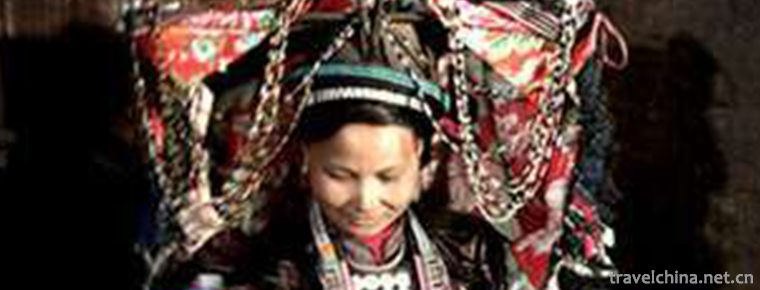
-
Red Leaf Valley Eco cultural Tourist Area
Red Leaf Valley Eco-cultural Tourist Area, National Key Scenic Spot, National AAAA Class Tourist Spot. Red Leaf Valley is located in the southern mountain area of Jinxiuchuan Township.
Views: 193 Time 2019-01-16 -
Laiwu Campaign Memorial
Laiwu Campaign Memorial Hall is situated on the Huangshan Mountain in Laiwu District, Jinan City. It covers an area of 45,000 square meters and has a building area of more than 8,000 square meters.
Views: 133 Time 2019-01-29 -
Baron drum dance
Balang is inspired by the intangible cultural heritage of Gansu Province. Tibetan is called "Sham Dance", "Sha Mu Dance" and "Sha Mu Dance". Tibetan means a kind of peace.
Views: 251 Time 2019-04-02 -
Tibetan Engraving and Printing Techniques
Tibetan engraving and printing skills of Dege Printing Institute, local traditional handicraft skills of Dege County, Sichuan Province, and one of the national intangible cultural heritages..
Views: 356 Time 2019-04-05 -
Dan GA harmonics
Jia Hao, which means "grand singing and dancing performance" in Chinese, is a kind of collective dance, usually performed in the Tibetan New Year and major festivals every year. Men.
Views: 330 Time 2019-04-25 -
Gold lacquer inlay decoration technique
Gold lacquer inlay decoration technology, Beijing local traditional handicraft, one of the national intangible cultural heritage..
Views: 254 Time 2019-05-07 -
Manufacturing Techniques of Fukushima Ship with Watertight Cabin
The manufacturing technology of watertight compartment Fukushima, the local traditional handicraft technology of Jiaocheng District in Jinjiang and Ningde City, Fujian Province, is one of the national.
Views: 147 Time 2019-06-15 -
Furong mountain
Furong mountain in Sichuan Province is a snow mountain, stretching for hundreds of miles. Furong mountain scenic area is composed of Furong mountain, Shunan hot spring, hanging coffin.
Views: 132 Time 2020-10-16 -
Yulei mountain
Yulei mountain, according to the original note of "Mian County" in the book of geography of Han Dynasty, "the water of Yulei mountain flows from southeast to Jiangyang and enters into the river." In Shuo Wen, the word "Yu" is written as "the water flows out of Sichuan county, Mian Yu Lei, Shandong Province, and enters the river in the south of Shandong Province.
Views: 404 Time 2020-11-08 -
Introduction to Panzhihua
Panzhihua, a prefecture level city of Sichuan Province, is located in the southernmost end of Sichuan Province, 614 km away from Chengdu in the north, 273 km from Kunming in the South and Lijiang and Dali in the West; it is located in the central and southern section of Panxi Rift .
Views: 330 Time 2020-12-14 -
Suining City honor
Seven Star City of public welfare and charity in China.
Views: 358 Time 2020-12-16 -
Yibin tertiary industry
In 2019, the real estate development investment in Yibin City is 35.74 billion yuan, an increase of 14.5% over the previous year. Among them, residential investment was 27.018 billion yuan, an increase of 18.0%; the investment of office building was 4.
Views: 370 Time 2020-12-18
